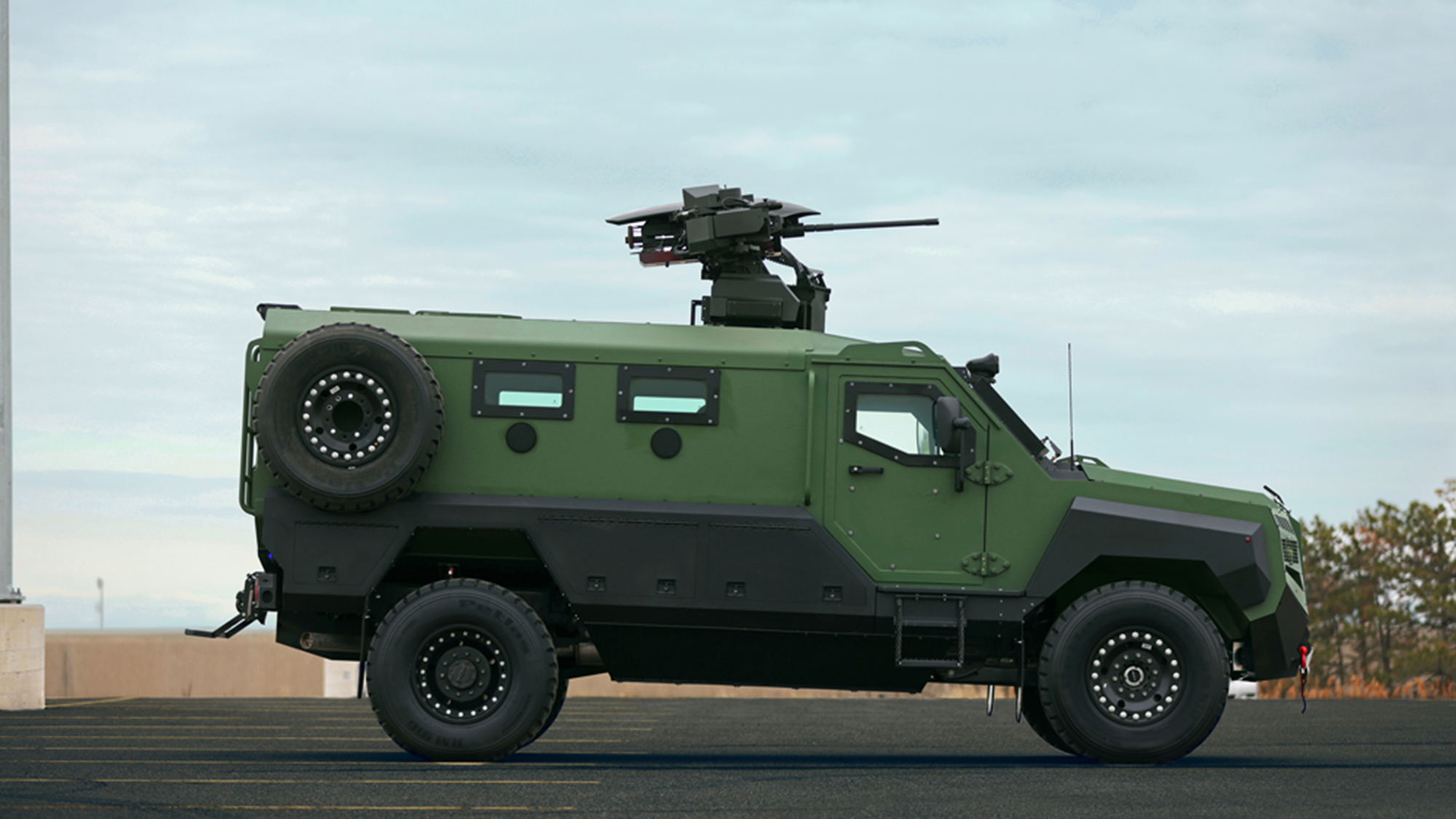

On May 30, Canadian defense company Roshel Defence Solutions officially launched its new armored troop transport, the Senator model Mine Resistant Ambush Protected (MRAP) vehicle. Part of the launch was surviving a series of tests to prove that the vehicle can protect its occupants.
The testing was conducted by Oregon Ballistic Laboratories and done to a standard called NATO “STANAG 4569” level 2. (STANAG means “standard agreement,” and 4569 is the numbering of that agreement.) What that means in practice is that the Senator MRAP is designed to withstand a range of the kinds of attacks that NATO can expect to see in the field. These include bullet fire from calibers up to 7.62×39mm at roughly 100 feet (30 meters). Why 7.62×39mm caliber bullets? That’s the standard Soviet bullet, which has outlasted the USSR itself and is common in weapons used across the globe.
In addition, STANAG 4569 dictates that the vehicle must survive a 13 pound (6 kg) anti-tank mine activated under any of the vehicle’s wheels, as well as survive a mine activated under the vehicle’s center. Beyond the bullets and mines, the vehicle also has to withstand a shot from a 155mm high explosive artillery shell burst landing 262 feet (80 meters) away.
All of this testing is vital, because a troop transport has to advance through bullet fire, keep occupants safe from mines, and travel through an artillery barrage. That NATO standards are designed to withstand Soviet weapons is a convenience for any equipment exports aimed at Ukraine, but also means the vehicles are broadly useful in conflicts across the globe, as an abundance of Soviet-patterned weaponry continues to exist in the world.
To showcase the Senator MRAP in simulated attack, Roshel released two videos of the testing. The first, published online on May 29, features a bright green checkmark in the corner, “all tests passed” clearly emblazoned on the video as clouds of destruction and detonations appear behind it.

A second video, released June 16, shows the Senator MRAP in slow motion enduring a large TNT explosive hitting it on the side. The 55 lbs (25kg) explosive is a stand-in for an IED, or Improvised Explosive Device. IEDs were commonly used by insurgent forces in Iraq against the United States, and in Afghanistan against the NATO coalition that occupied the country for almost 20 years. While anti-tank mines tend to be mass-produced industrial tools of war, IEDs are built on more of a small scale, with groups working in workshops generally assembling the explosives and then placing them on patrol routes.
It was the existence of IEDs, and their widespread use, that prompted the United States to push for, develop, and field MRAPs in 2006. Mine Resistant Ambush Protected vehicles were not a new concept. South Africa was one of the first countries to develop and field MRAPs in the 1970s, putting essentially a V-shaped armored transport container on top of an existing truck pattern. The resulting “Hippo” vehicle was slow and cumbersome, but could protect its occupants from explosives thanks to the V-shaped hull deflecting blasts away.
MRAPS did not guarantee safety for troops on patrol, but they did drastically increase the amount of explosives, or the intensity of attack, needed to ambush armored vehicles.
“The presence of the MRAP also challenged the enemy, since the insurgents had to increase the size of their explosive devices to have any effect on these more survivable vehicles. The larger devices, and longer time it took to implant them, increased the likelihood that our troops would detect an IED before it detonated,” Michael Brogan, head of the MRAP vehicle program from 2007 to 2011, told the Navy’s CHIPS magazine in 2016.
The Senator MRAP features, like its predecessors, a V-shaped hull. It also benefits from further innovations in MRAP design, like mine-protected seats, which further reduce the impact of blast on their occupant. Inside, the Senator can transport up to 10 people, and Roshel boasts of its other features, from sensor systems to weapon turrets. For as long as IEDs and mines remain a part of modern warfare, it is likely we can expect to see MRAPs transporting soldiers safely despite them.
Watch one of the tests, below:


